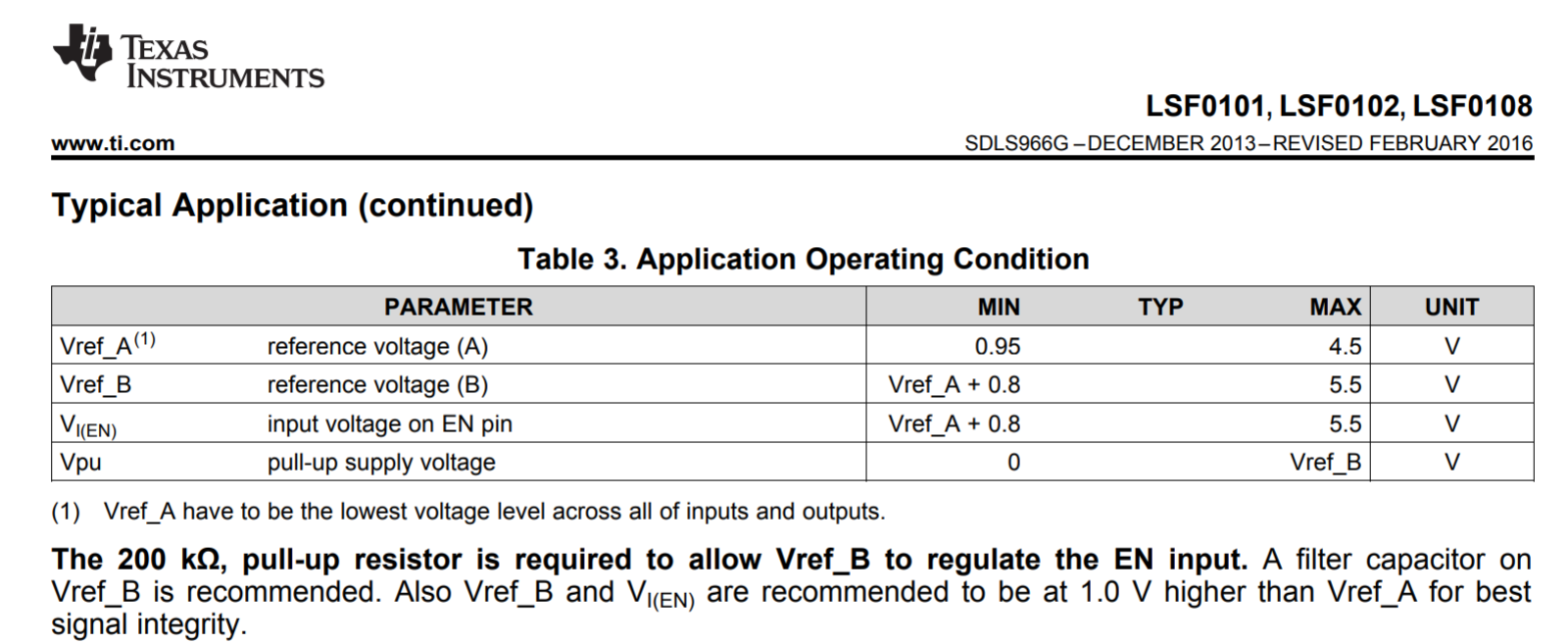Other Parts Discussed in Thread: USB2ANY, TXB0302, LSF0102
Hi,
I am trying to interface 3.3V USB2ANY I2C with a voltage rail that starts @ 2.4V, then ramps up to 5V. I was initially using the TXS0102, tying VCCA=3.3V USB2ANY side and tying VCCB to the other side (2.4V -> 5V). The issue that we overlooked was that the TXS0102 only works with VCCB>VCCA, which is not the case when VCCB=2.4V (note VCCA=3.3V always since it is coming from the USB2ANY I2C).
I saw the previous question suggesting the TXB0302 may be a good option. The issue with this device is its max voltage on either side is 3.6V, which won’t work for my application which needs 5V on one side. Is there one similar with a max voltage that can handle my application requirement of 5V?
Basically, I am looking for a level translator to be used for I2C communication – so it needs to be bidirectional (no direction pin). It needs to interface the 3.3V USB2ANY with a voltage rail that varies from 2.4V to 5V, so the VCCA can be greater or less than VCCB. Is there a level shifter that does this? What are my options?
Thanks,
Luke





